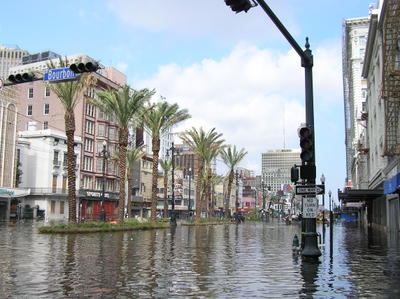 This article was written for Business Continuity Awareness Week by Tony Gill, Managing Director of Gill Advisors Inc., which provides BCM solutions to public and private sector clients.
This article was written for Business Continuity Awareness Week by Tony Gill, Managing Director of Gill Advisors Inc., which provides BCM solutions to public and private sector clients.When an organization finally makes the commitment to put together a BCM plan, it should consider how a well thought-out facility strategy adds the finishing piece to a complete plan. Real estate assets – regardless of whether they are owned or leased – play a significant role simply because they constitute the “place” where all organizational operations occur. In fact, when planners begin introducing the facility piece into the BCM equation, a number of new issues begin revealing themselves like successive layers of an onion. The traditional link between BCM and real estate has always been associated with identifying backup or redundant sites where systems and staff can maintain critical operations should the primary site become non-operational. The degree to how incident-ready these locations are is described by whether they are identified as being hot, warm or cold sites. As BCM expands beyond the confines of the IT department and becomes a front-burner priority across the enterprise, the role of real estate changes accordingly.
When this happens, an entirely new range of issues need to be evaluated. Let’s begin by expanding on the issue of backup facilities. If an organization has more than one location - assume for illustrative purposes we’re talking about a regional network of branch offices - planners need to project how these facilities can be used beyond the roles they play under normal circumstances. This begins when BCM planners identify the critical functions that have the lowest threshold for being non-operational (often described as downtime) and prioritize them from most critical to least critical. Should a disruptive event force the closure of one facility, some of the critical operations identified at the outset can be carried on at a backup location. If this happens, planners might deem certain assets within their portfolios as being suitable for backup. Typically, the sequence of events after a disruptive incident would be as follows: primary site becomes non-operational; key personnel moved to secondary location; non-critical employees at backup site are told to make way for key individuals.
If backup sites become a viable strategy, the next question is what factors constitute an acceptable backup site. In this case, the familiar “location, location, location” mantra becomes just as applicable to BCM as it always has in real estate. Geographic proximity to hazards (e.g. flood planes, seismically sensitive zones with weak soil characteristics), backup power sources (sometimes even on separate power grids), as well as the availability of redundant communications infrastructure (including terrestrial, wireless or satellite based telephony) are just a sampling of some of the factors that should be analyzed when determining suitability.
Depending on resources, an organization may also want to consider establishing an emergency operations center (EOC) that can provide a command post for incident managers to use in the event of a disruptive incident. Again, this could be a stand-alone facility on or off site, or it can be as simple as a room set aside within a backup location. If such backup solutions are cost prohibitive, alternate solutions can be provided by external third parties. Such organizations can provide backup space in remote locations whose facilities are often configured to immediately “plug and play.”
If planners commit to evaluate the suitability of backup locations, they should do the same for primary locations. If the area is prone to earthquakes, hurricanes, or floods, good planners should ask themselves how well the facility is capable of allowing occupants to “shelter in place”, a strategy describing how structural integrity of a building contributes to creating internal safe areas where occupants can move without being exposed to hazards on the outside. If your organization is considering upgrading its facilities to better align with safety standards, some areas to consider include evaluating the types of building materials used within a facility (e.g. is reinforced concrete, or steel frames used?), the type of and amount of glass within a particular structure, as well as the physical proximity of the building to roads and parking lots. Such facilities should also have internal safety features such as modern sprinklering and alarm systems. Together these functions will make for a secure primary facility.
Beyond structural considerations, is there anything else planners do to make their facilities better withstand disruptive events? In the context of power, much can in fact be done. Events such as the 2003 Northeastern Blackout that left some 50 million people in the dark and imposed an economic cost of more than $1 billion on New York City alone vividly exposed the contributing role power hungry buildings played in the blackout. When the lights went out, there were many organizations who despite being able to shift to backup power sources, discovered within a short time that many of these sources were limited (such as diesel fuel that powered backup generators). The ability of a facility to better insulate itself from the effects of blackout can significantly be enhanced with the adoption of smart building technologies that can reduce their dependence on traditional sources of power by using a range of smart building technologies including occupancy sensors, as well as solar power that can be used to fuel up backup generators.
There are other strategies that can be employed that may initially seem disconnected to fundamental BCM principles but in fact play a key role in the larger equation. Consider telework for instance. Increasingly, more organizations are looking to better manage overhead and boost employee morale and productivity by adopting teleworking into their corporate culture. Telework programs are set up to allow an employee to work remotely at least a certain percentage of the time. In turn, this not only can reduce real estate costs (face it, if space is required less often, less space is needed), but also helps manage the risks of having highly skilled workers in a single location.
The take-away from all this is simply that a well-considered BCM plan will always be carefully aligned to an organization’s real estate strategy. After evaluating assets within a portfolio, a wholesale restructuring of facilities and their uses may need to be undertaken, a process that might require acquisition and disposition of space and/or buildings. From an administrative standpoint, it’s a good idea to consider harmonizing lease terms and create ways to manage all facilities from a central platform. Taken together, these factors point to the inevitable expansion of a Facilities Manager’s role and this requires a greater understanding of basic BCM principles. As more information is absorbed, he/she becomes a more strategic contributor to the BCM process.



